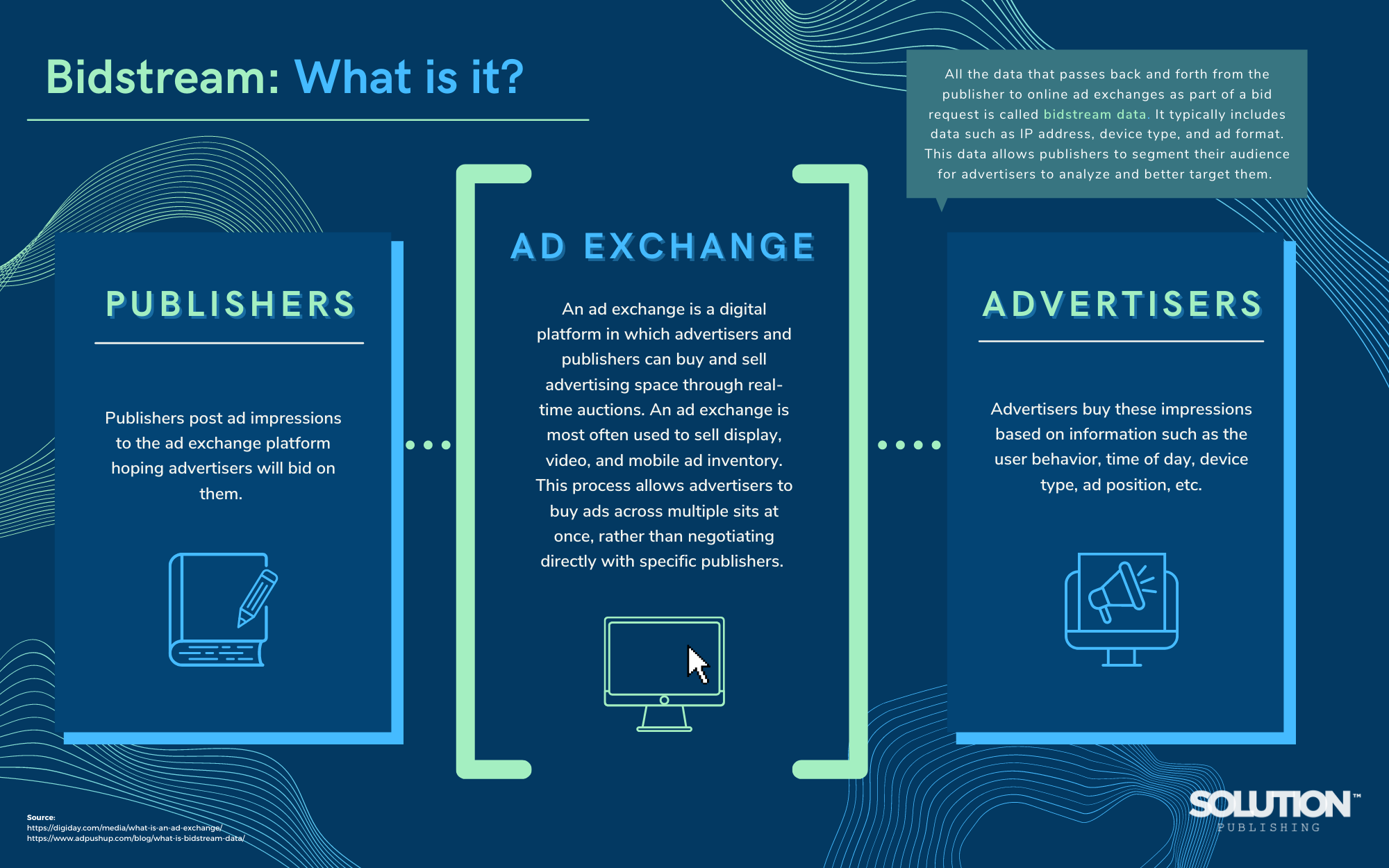
The Hidden Ways Your Identity is Traded Online
The Bidstream is a colloquial term for all of the data passing back forth from publisher websites to online advertising exchanges which then match ad “bids” to instantly available ad unit inventory.
Over the last decade this web advertising ecosystem has quietly undergone a transformational consolidation, greatly improving the user experience. The 2010-style with a lag for ad units rendering on your news page, has largely been solved. Advertising exchanges have a lot to do with that progress. Things are faster, feel more seamless, and you regularly discover ads that seem to magically be producing things you are interested in.
But these improvements produce a “stream” of data that is largely responsible for many of the targeting phenomena you experience online.

How a Targeted Ad Gets Served to a User
Let’s briefly enumerate the steps involved in serving you an ad on your favorite news site:
- You navigate to a story on a publisher website.
- That publisher determines your identity via login or previously placed cookie from a “tag.”
- The website creates some form of anonymous ID representing you to send to advertisers.
- The website packages that ID along with other anonymized, but identifying, information such as:
- Geo location
- IP Address
- Mobile ID – if on a mobile device
- Browser type
- Device type
- Article being read
- Ad unit size being offered
- The package is then sent to one or several ad exchanges.
- The ad exchange then, in real time, uses that information to offer the ad unit being shown to the highest bidder.
- Advertisers are trying to find the best “fit” of audience for their ads in order to determine their bid price.
- An advertiser bidding wins the auction and their ad is then served on the page you are reading. If the exchange is doing its job, you may click on that ad. After you click, that publisher will receive anywhere from a penny to a few dollars several months later.
This is a simplistic representation. There are actually many more steps involved.
This is happening millions of times each second all over the world. One thing to notice is the amount of data being exposed in these transactions, even when bids are not winners. This data is, by regulation, essentially public and available to be analyzed, sliced, diced and aggregated for all sort of purposes.
Who Uses Bidstream Data?
Many companies subscribe to different versions of this Bidstream (imagine watching bullets fly from different windows at different houses on a battlefield).
They use it to divine user interests, reading patterns, and company-level intent. Another takeaway is that although the IDs are anonymized from the publishers, a composite representation of a user is constructed by the exchanges that gives 95%+ confidence of actual user identity. In other words, they know who you are despite regulators attempts to mandate some level of online privacy.
How Does Bidstream Data Impact User Privacy?
Much has been made of the recent push for more privacy. Between Google’s paused cookie ban and Apple’s announcement that they will be masking mobile IDs along with some additional user telemetry, it’s now obvious that the “online privacy movement” has real legs.
Many have speculated that this trend will result in a move back toward 1st party audiences and directly between publishers and advertisers. In the meantime, the Bidstream lives on, even if users rarely glimpse it directly.
See more: https://techcrunch.com/2021/05/13/google-analytics-prepares-for-life-after-cookies/
by: Byron Crowell, CEO and Founder
About Byron: After growing up in Tampa and playing college football at Virginia Military Institute (VMI), Byron ventured West and spent 20 years in the heart of California’s technology startup scene. In 1998, he built the first internet-based mystery shopping company. In 2002, he co-founded RetailEyes, which was sold to a UK-based conglomerate in 2011. However, his first business love has always been always B2B marketing and technology via Solution Publishing, which he founded in 2001. Byron moved his family back to Tampa and is on a mission to bring West Coast venture startup energy and experience to his hometown. He loves the Buccaneers and Lightning and is an active youth hockey supporter.
